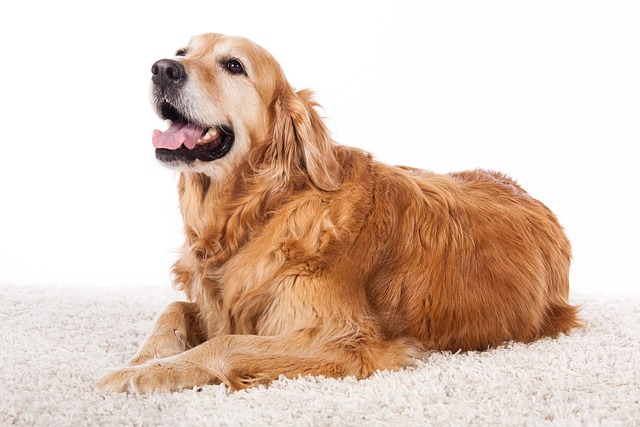
How can I tell if my dog's heatstroke is serious
Let’s be real: It’s a sticky August morning in Los Angeles, and you took your 2-year-old Golden Retriever, Max, for a walk a little later than usual
I sat with my friend Lila in her Miami kitchen last week, staring at a bag of grain-free kibble she’d just bought for her 2-year-old Pug, Milo. “The pet store clerk said grains are ‘bad for dogs’—but Milo’s been lethargic since I switched, and his poop’s all soft. Is it bad for dogs to eat grain-free food, or am I overreacting?” Lila asked, prodding Milo’s bowl (which he’d barely touched). If you’re a new U.S. dog owner tempted by “grain-free” labels (thanks to fancy marketing), the answer isn’t black-and-white: Grain-free food isn’t inherently bad—but it can be harmful if it cuts out healthy grains for low-quality substitutes, or if your dog doesn’t actually need it.
To understand why grains get a bad rap (unfairly, for most dogs), let’s break down dog nutrition: Grains like brown rice, oats, and barley are packed with fiber (good for gut health), vitamins, and energy—things active dogs need. Lila’s vet later explained that the “grain-free trend” started because a tiny number of dogs have true grain allergies (less than 10% of allergic pups, in fact). Most dogs digest grains just fine. The problem? Many grain-free foods replace grains with large amounts of peas, lentils, or chickpeas. The FDA has linked these “legume-heavy” formulas to dilated cardiomyopathy (DCM)—a serious heart condition—because they can block absorption of taurine, a nutrient critical for heart health. Unlike low-quality grain-containing foods (which might use filler grains like corn), the risk with grain-free lies in what replaces the grains, not the lack of grains themselves.

Here’s how to tell if grain-free food is bad for your dog, step by step: First, check the ingredient list. Look for legumes (peas, lentils) high up on the list (before meat) or as the main carb source. Lila’s bag had “pea flour” as the second ingredient—her vet said that’s a red flag. Opt for grain-free foods with sweet potatoes or pumpkin instead (safer carbs) if you still want to avoid grains. Second, watch your dog’s health. Signs grain-free food is harming them: lethargy, soft poop, difficulty breathing (early DCM), or loss of appetite—exactly what Milo had. Lila switched back to a grain-containing food with brown rice, and Milo perked up in 48 hours. Third, ask your vet before switching. Most dogs don’t need grain-free—your vet can test for allergies (via blood work or elimination diets) to confirm if it’s necessary. Lila’s vet said Milo had no grain allergy—he just hated the pea-heavy kibble. Fourth, skip the “trend” if your dog’s doing well. If your current grain-containing food keeps your dog energetic, with firm poop and a shiny coat, there’s no need to switch.
For apartment living, store any dog food (grain-free or not) in an airtight container to keep it fresh (moldy food is dangerous, regardless of grains). When walking, always carry poop bags (cities like Miami fine $150 for leaving messes)—grain-free food might make poop softer, so extra bags help. Never scold your dog for refusing food—if they hate their grain-free kibble, it’s a sign it’s not right, not “misbehavior.” Punishment violates U.S. animal welfare standards and makes mealtime stressful. Keep your dog’s rabies vaccine up to date (required nationwide)—vet visits are the perfect time to review their diet; many vets can recommend grain-free options if needed (like for true allergy cases).
A week later, Lila texted me a video of Milo gobbling up his brown rice kibble. Is it bad for dogs to eat grain-free food? For Milo—and most pups—yes, if it’s legume-heavy and unnecessary. But for dogs with true grain allergies, it’s a lifesaver. The key isn’t avoiding grains—it’s choosing food with high-quality ingredients, guided by your vet.

Let’s be real: It’s a sticky August morning in Los Angeles, and you took your 2-year-old Golden Retriever, Max, for a walk a little later than usual

You're enjoying a summer afternoon at the park when you notice your dog has stopped panting and appears disoriented - their gums are bright red

Let’s paint the picture: You’re in your Denver apartment, watching your 4-year-old Boston Terrier, Ruby, plop down mid-play session with her favorite toy

Many dog owners notice their pets nails seem shorter after regular walks,but how much does this daily activity actually help?The answer depends on where you walk—concrete sidewalks or asphalt streets gently file nails as a dog's paws hit the ground

Most dog owners notice their pup scooting across the carpet at some point, but few connect it to impacted anal glands. These small sacs near a dog’s rectum secrete a scent for marking territory

Most vets agree that regular dog teeth cleaning is key to avoiding painful dental issues later. For healthy adult dogs, a professional cleaning at the vet’s office every 12 to 18 months usually works well.